Want to know how to start a YouTube channel? Good choice!
YouTube isn’t a platform you can ignore. It attracts more users every month (two billion!) than any other social media platform, including Facebook, making it one of the most popular sites in the world. People watch over a billion hours of video there every day.
But while there’s definitely an audience, there’s also plenty of competition. There are 37 million YouTube channels, 22,000 of which have more than a million subscribers. This means that even though YouTube represents an incredible opportunity for creators, you have to take it seriously if you expect to be successful.
So as a creator, you probably want a presence on YouTube, whether to promote your business, build a dedicated audience, explore a hobby, or generate some revenue. You might be wondering how to start a YouTube channel. In this guide, we give you an actionable set of steps to start your own YouTube channel and be successful.
Castos is a participant in the Amazon Services LLC Associates Program. We may earn commissions from your purchases on Amazon.com, though at no cost to you.
Action
Are you looking to publish your podcast to YouTube? This is a powerful way to expose your podcast to a massive audience. Learn more: How To Start A Podcast On YouTube And Grow Your Audience
How to Start a YouTube Channel in 4 Steps
- Plan Your Video Content
Consider your goals, audience, topic/niche, and the kind of quality content you want to create. Then check out similiar channels to learn what they do.
- Set Up Your YouTube Channel
Open your YouTube channel, explore the platform, add branding, verify the channel, and pick up the right equipment to start making videos.
- Record Your First Video
Start recording consistently. Give your videos structure, target the right length, add music, and edit them carefully. Now’s a good time to experiment with YouTube Live.
- Promote Your YouTube Channel
Create engaging thumbnails, optimizing your titles, ask for likes and subscriptions, engage with your audience, and monitor your analytics carefully.
YouTube Success Takes Time
Before we dive into our tutorial, let’s set your expectations first.
Just like podcasting, you aren’t likely to see massive success from your YouTube channel right away. They take time to grow (in terms of audience and revenue). You’ll need lots of videos to create a library for viewers to enjoy.
There’s no avoiding this challenge. Creating a high-quality content platform takes time. So if you’re considering YouTube vs. blogging, podcasting, streaming, writing newsletters, or making TikToks, please understand that there’s a long road ahead of you that requires consistency.
Fortunately, this takes a lot of pressure off you. You don’t have to worry about making every video perfect. Instead, focus on publishing consistently.
As you learn more about the video recording and publishing process, your content will get better over time. Besides, your audience doesn’t need flawless videos. You just need to add value to their lives in some way.
How Much Does it Cost to Start a Youtube Channel?
In any guide on how to start a YouTube channel, we have to talk about cost. Fortunately, that’s not much of an issue. Starting a YouTube channel is completely free. You can start using basic equipment you probably own, like your computer’s web camera and microphone.
That said, there’s no upper limit to how much you can spend to produce quality videos. You could spend a lot on professional recording equipment, lighting, editing tools, effects, and a place to film.
Unless you have a generous budget available, we recommend starting small by producing simple videos that you can make with equipment you already own. As you learn more about video creation and YouTube’s platform, you can slowly invest in more equipment to produce higher quality videos.
How to Start a YouTube Channel in 10 Steps
There are four steps to starting a YouTube channel: planning, setup, recording, and promoting. If you want to know how to start a YouTube channel, you have to go through each step.
1. Plan Your Video Content
Before you pull out your camera, it’s important to spend some time planning. A little bit of planning can help you work efficiently and save you a lot of time in the future.
Think about your goals
Before creating your first video, spend some time thinking about what you hope to achieve. Do you plan to use your videos to sell products? Do you want to drive traffic to your website, podcast, or some other project? Or do you simply want to grow your audience?
Once you have some goals in place, keep him in mind every time you produce a video. For instance, if you intend to drive traffic to your website, every video should mention your website in some way, especially in the call-to-action.
It’s a good idea to write down your goals somewhere. Before publishing a new video, briefly review your goals and ask yourself if the content serves them. If not, you may want to record some additional footage so your videos are always driving towards your goals.
Define your target audience
Spend some time thinking about your target audience. Who will watch your videos? What do they care about? What will make them click your thumbnails and stick with your videos for the duration? The best you understand your audience, the more likely you are to create content they love.
If you’re ready to start a YouTube channel, you probably have a good idea who your target audience is. Nevertheless, it’s a good idea to speak to some of them personally if you can. Ask about the kind of popular content they like to view. You’re looking for a way to serve their needs while still differentiating yourself from other successful channels.
It helps to create an audience persona worksheet to keep all of your findings in one place. Something like this:
Find your niche/topic
It’s nearly impossible to appeal to everyone, so it’s important to find a niche or topic where you can excel. This should be something you know well where you can add a lot of value.
Don’t be afraid to reach down into something specific. You may want to create a content strategy around entrepreneurship, but there’s a lot of that on YouTube already, so you might be more successful if you focused on real estate entrepreneurship, Texas entrepreneurship, or entrepreneurship after age 65. The potential audience is smaller, but you have a much better chance of being competitive.
If you already have a brand, go with the same niche so all of your content compliments itself. Once your channel becomes more popular, you can consider widening your scope a bit. But in the beginning, keep it niche to build an audience.
Determine the kind of content you’ll create
Before you start filming, it’s smart to have a general idea of the type of content you intend to create. If you have a solid plan in place, you will be able to produce content faster.
It’s true that you have the freedom to create any type of content that you like and there is certainly an audience for everything. Nevertheless, some types of content perform better on YouTube than others. Serving your audience what they want to consume is a key part of being successful (and a critical tip in our how to start a YouTube channel guide).
So what performs the best on YouTube?
- Interviews: Find an expert and ask them questions.
- Vlogs: Unscripted diaries of your life (or something happening).
- Comedy: Parodies, sketches, standup, or animated humor.
- Video podcasts: A podcast a video element.
- Games: Walkthroughs, tutorials, competitions, or just yourself playing.
- Education: Teach new concepts or ideas.
- Best-of lists: Round-ups of popular items, services, destinations, etc.
- Pets/animals: Education, tips, or just silly videos.
- Unboxing: Try a product/service for the first time and record your review.
- Tutorials: Teach viewers how to do something specific.
- Product launches: Show off a new product or service.
That said, don’t be afraid to try something new. You never know what might become popular on YouTube because of your innovation!
Research similar YouTube channels
Before you start recording videos, take a few minutes to scope out the other YouTube creators in the same space. You don’t need to copy their content, but it’s helpful to identify patterns or commonalities between other creators that may offer opportunities for success.
For example, if you notice that other creators have high performing vlogs from high profile events, that’s something you may want to plan in the future.
Grow Your Audience with Castos
Try Castos for free for 14 days. See how it helps you create great content and connect with your listeners.
Action
Read to start your own podcast? Learn the nitty-gritty details of starting your own show in our comprehensive guide. Learn how to start a podcast.
2. Set up Your YouTube Channel
Step two in our guide on how to start a YouTube channel is your channel setup. This is where you put the pieces in order to start publishing your content.
Create your YouTube channel
If you have a Google account, you already have a YouTube account. But you still need to formally create the channel. To publish videos, you must create either a personal or a business channel.
If you want to make the channel using your personal account, sign into YouTube, click your profile picture in the top right corner, and then click the “Create a channel” link. Confirm the details to create your channel.
However, you may want to create a business YouTube channel. These can have more than one manager or owner. You can also connect a channel to your Brand Account if you have one.
Sign into YouTube, click your profile picture in the top right corner, and then click the “Create a channel” link. Select the Brand Account you want to use from the list, fill out the details, and click “Create” to get started.
(Check out YouTube’s guide to adding or managing more than one owner on a business YouTube channel.)
Add branding to your channel
Just like you would brand your website, it’s important to add branding to your YouTube page (even if you’re building a personal brand). This is an important way to give personality to your YouTube channel and make your brand stand out from other YouTube channels.
Fortunately, there’s not much to do here because YouTube doesn’t offer many opportunities to customize your channels page. There are only four elements you can affect:
Channel name
Every YouTube channel needs its own name. This is a big part of your brand, so it deserves some thought. Check out our full guide on naming your YouTube channel.
Profile picture
By default, your profile image is the profile image used by your Google account, but you can change it to something that makes sense for your YouTube channel. Don’t get too fancy here because you don’t have a lot of real estate to work with.
This image will be displayed under all of your videos, but it will be small, so whatever you use should look good at a small size.
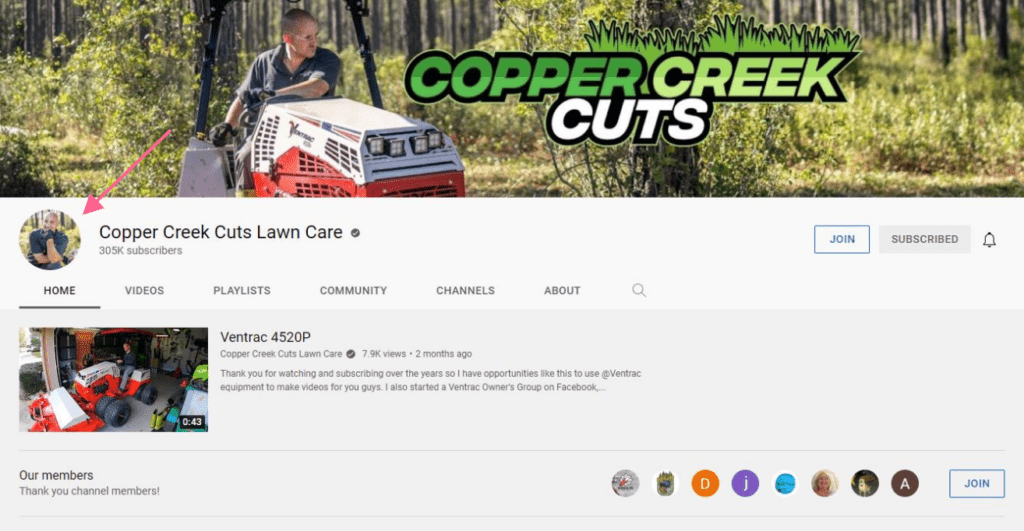
Banner image
This is the thin rectangular channel banner that appears at the top of your channel’s page. You have a bit more space to be creative. Feel free to add your logo, a bigger picture of yourself, other brand colors, and other images that represent your brand.
Keep in mind that this space has an unusual size, so you can’t upload any image that you – need something custom. The dimensions are 2560 x 1440 pixels with a safe zone of 1540 x 427 pixels.
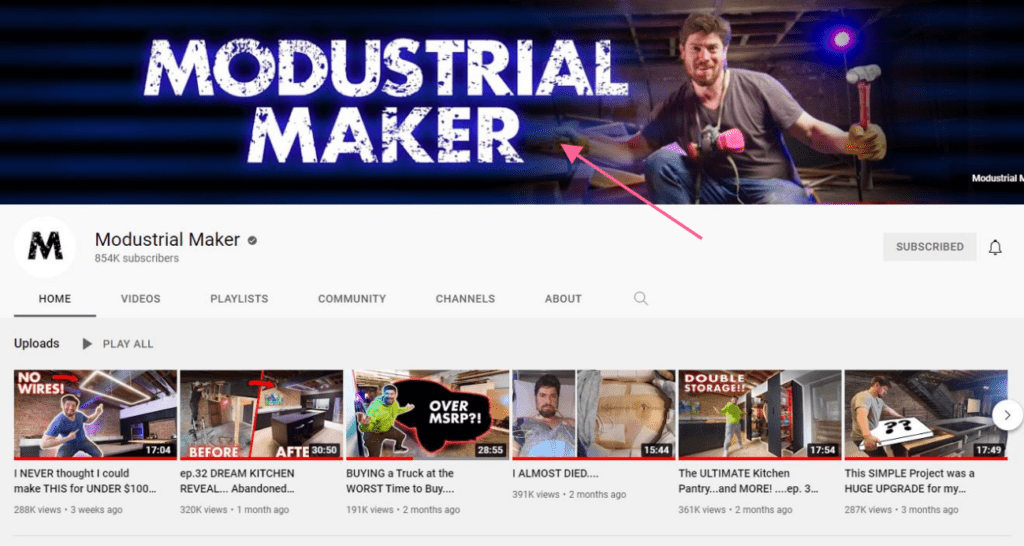
Channel trailer
This is just a video that gets pinned to the top of your YouTube channel’s page. It auto plays as soon as someone visits the page. You could use your most popular video or, like a lot of successful youtubers, create a custom trailer that introduces you and your brand to new viewers.
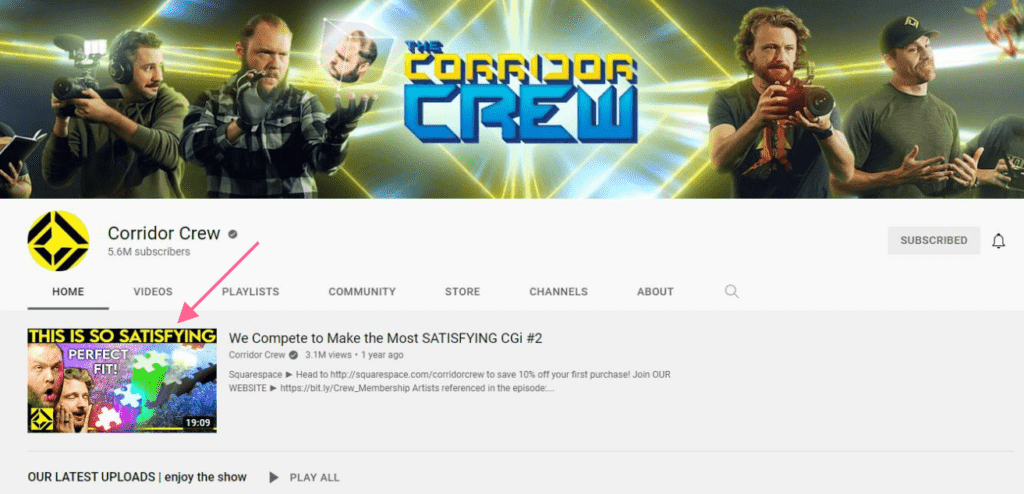
Channel description
Your YouTube channel description should tell potential viewers what they can expect to see from your video content. You should also mention your publishing schedule. This is a good place to let your personality shine. You should also use keywords to help users find your channel. Link to your social media accounts as well.
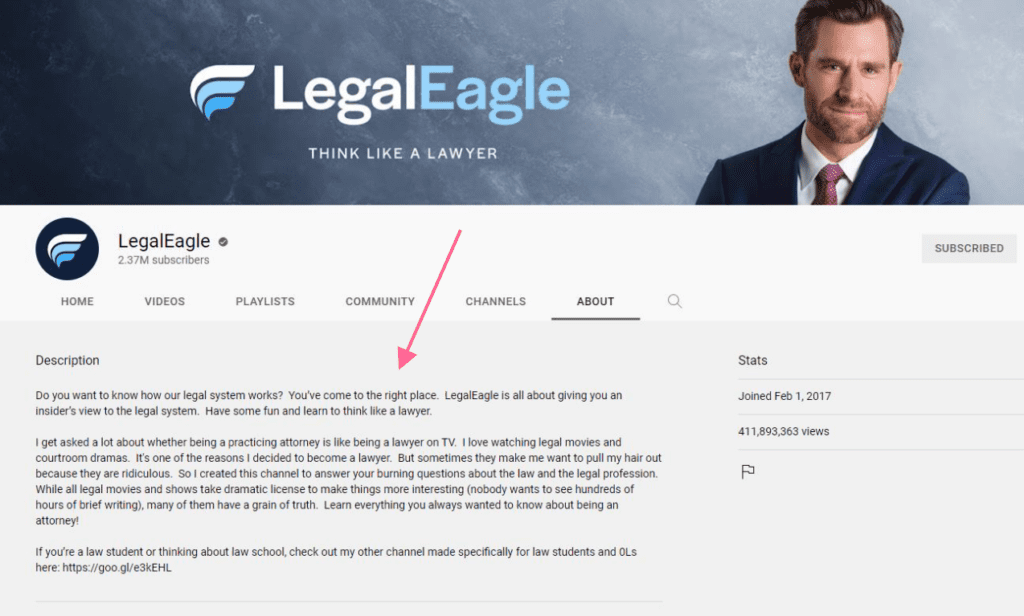
Invest in the right equipment
Technically you can record videos with your phone, but the production value won’t be high and you’ll struggle to attract viewers. You don’t have to spend a lot of money on video equipment, but it’s a good idea to spend a little. An inexpensive camera can go a long way.
Check out our guide on podcasting equipment. We make lots of recommendations for microphones, cameras, and microphones. But here are a few suggestions to get you started:
- Microphone: Audio-Technica ATR2100 Cardioid Dynamic Microphone or Samson Q2U USB/XLR Dynamic Microphone
- Headphones: Sennheiser GAME ONE Headset
- Camera: Kickteck HD Video Camera Camcorder or Nikon COOLPIX B500
For YouTube specific recommendations, check out our guide on YouTube microphones and our full guide on the best cameras for YouTube. If you intend to record just your screen, you’ll do well to pick up a screen recorder.
Additionally, you may need to pick up some lighting equipment depending on your recording space. If you expect to record in a space with harsh lights and lots of shadows, you’ll need some key lights to make yourself more presentable.
Explore YouTube’s platform
Before publishing your first video, it’s a good idea to familiarize yourself with the basic features of YouTube’s platform. If this is your first time starting a YouTube channel, you’ll be surprised to learn how many great features YouTube offers for content creators.
There are some unique ways to customize your channel, edit videos, create chapters for videos, create custom URLs, and navigate a myriad of copyright issues.
Verify your channel with YouTube
Verifying your YouTube channel distinguishes it from other channels with similar names (or copycats who try to capitalize on your success). It makes your channel the “official” one for your brand. Additionally, verification gives you access to some special YouTube features, like the ability to upload custom thumbnails.
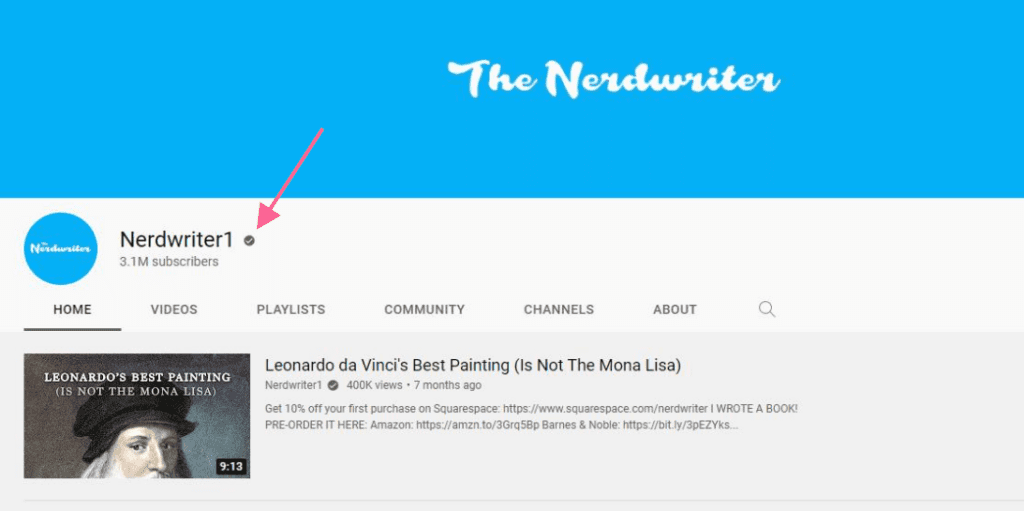
3. Record Your First Video
The first two steps in our guide on how to start a YouTube channel may seem like a lot of work, but they are absolutely necessary for the success of your channel. But now it’s time to record your first video.
Tip
Before you start creating content, it’s a good idea to learn how the YouTube algorithm works.
Give each video a familiar structure
Just like a podcast needs intros and outros, so does a video. This creates structure that helps your viewers follow your content. Use your introduction to capture their attention and introduce the video’s topic. Then use the outro to recap the topic, build excitement for what you plan to do next, and hit them with a call-to-action.
As a new video creato, you will make countless mistakes. As you record, don’t be afraid to pause and try again. And if the end product isn’t perfect, that’s okay too. Don’t let perfect be the enemy of good. Your content quality will improve over time as you become comfortable with the process.
Consider your video lengths
There’s nothing stopping you from making a video of any length, but videos that last around 10 minutes generally perform the best on YouTube. Short videos (less than five minutes) and videos longer than 15 minutes don’t perform as well, so keep yours somewhere in between.
That said, your length will depend on your content goals and the topic of the video. If it takes 13 minutes to make your point, and you don’t feel there’s any way to cut it down, then so be it. What’s most important is that your videos provide value to your audience.
If you plan to stream live, you’ll need to record for significantly longer: at least 30 minutes, but ideally an hour or two. Yes, it’s a lot of time in front of the camera, but you won’t spend any time editing the video together. The audience gets what they get. (More on YouTube Live in a moment.)
Add music to your videos
Like many YouTubers, you probably want to include music in your videos. This is a great way to elevate the experience for your viewers. But you can’t just use any music. You have two options:
- Use copyright-free music from the YouTube Audio Library or other free platforms.
- Pay to license royalty free music from a stock media company.
If you use music without the right licensing, there’s a very good chance YouTube’s automated Content ID system will catch it and remove your video. Syncly, Audio Jungle, Premium Beat, or Audio Network.
Take editing seriously
Great content is made in the editing room, they say. Even YouTubers who have a natural style with few cuts still spend some time editing each video. This is a key way to turn a “home movie” into something marketable.
You’ll want to pick up some affordable video editing software, such as Lightworks, Adobe Premiere Rush, HitFilm Express, or VSDC. You could also use free options like Windows Movie Maker or Apple iMovie. See more options in our YouTube editing software guide.
Each video should tell a story. If you filmed any of your order, now’s the time to organize it properly to tell a cohesive story. Every second should be interesting. Remove anything that doesn’t serve the story. Don’t leave fluff content in your videos just to make them longer.
Consider using YouTube Live
Broadcasting live is a unique way to connect with your audience. For one, they get to see the real you, not the edited version of yourself that you typically put in videos. For another, they can chat with you in real time. You can answer their questions and respond to their comments.
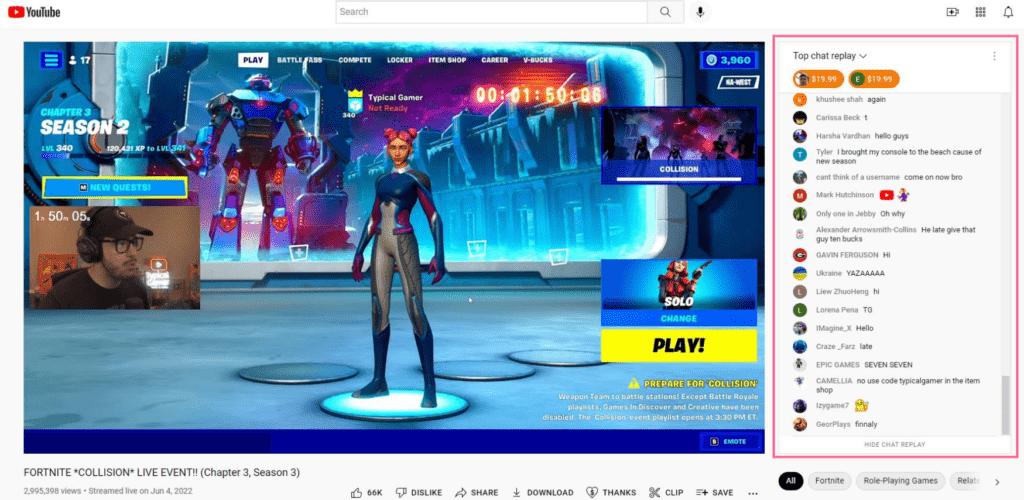
What’s great about streaming live is that you can later upload that content as a traditional video, thereby squeezing as much value as possible out of your content.
Monetize your channel as soon as you can
At a certain point, YouTube will let you monetize your videos. We recommend taking advantage of this right away. Every penny you earn can be poured back into your videos or other content initiatives, like your blog or podcast. You can monetize using AdSense, becoming a YouTube partner, selling merchandise, accepting tips and donations, or finding sponsors.
Publish consistently
We’ve spoken before about the importance of consistent publishing. Audiences and social media platforms reward content creators who publish often end on a regular schedule. This is an important way to maximize your exposure and build a reliable audience.
The frequency that you posted doesn’t matter that much. You might publish a video once a week, twice a week, or even once a month. What matters is that you stick to whatever schedule you set. That said, try not to go too long without publishing a video or your audience may forget about you.
4. Promote Your YouTube Channel
A guide on how to start a YouTube channel wouldn’t be complete unless we talked about promoting your channel. Here are some easy – but powerful – ways to promote your channel on YouTube’s platform.
Create engaging thumbnails for each video
Your thumbnails are the viewer’s first impression of your video. They’ll use the thumbnail and title to decide if your video is worth watching. Unfortunately, YouTube’s recommended thumbnails are usually quite poor since they are just a frame from your video.
Whenever you post a video, it’s a good idea to upload a custom thumbnail that potential viewers we’ll find enticing. Thumbnails with simple images, large text, and bright background colors tend to draw the most attention and get the most clicks.
Extra Credits does this well. Notice how all of their thumbnails are cusom, colorful, and engaging. They use a brief bit of text to highlight the video’s topic.
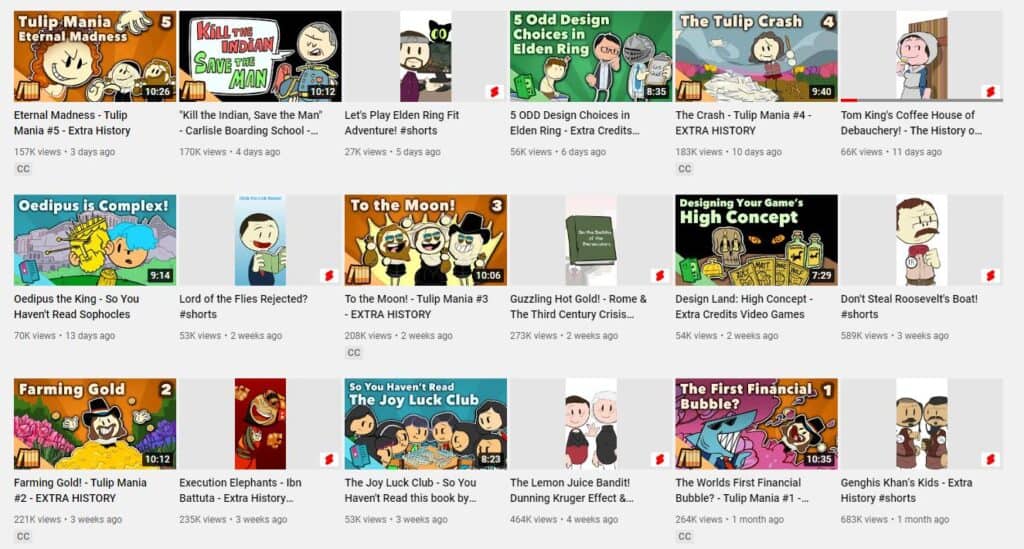
Optimize your titles and descriptions
YouTube isn’t just a video platform. It’s also a search engine that people use to find the kinds of content they care about. So in order to be successful on YouTube, you have to optimize your videos for search so your audience can find them.
Consider the words your audience would use to find your videos. These are called keywords. Use keywords in your titles and video descriptions to help searchers find your stuff. For instance, notice how all of Oberlo’s video titles use carefully selected words that their audience might search for.
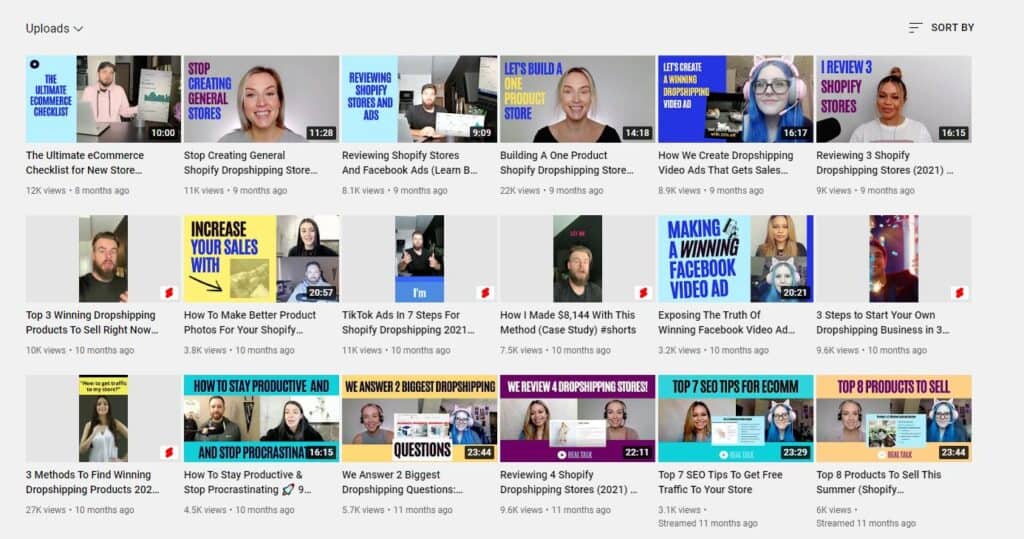
Engage with your audience
Keep in mind that YouTube is a social media platform. Users can interact with your videos by liking and commenting, just as they can on Facebook or Instagram. You can give them a better experience by replying to their comments and starting your own comment threads on each video. Creators who interact with their audience are always more successful.
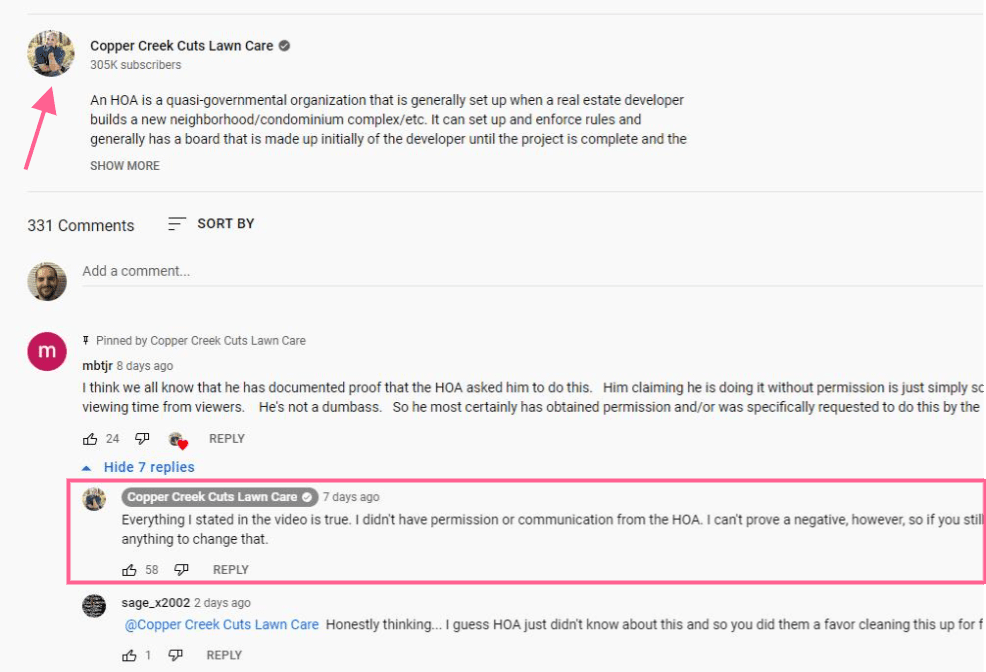
While you engage with your audience, be sure to ignore all of the negative comments. No matter how big or small your channel is, there will always be people who try to tear you down. Keep in mind that you can’t please everyone. Ignore the people who don’t enjoy your content and focus on the ones who appreciate what you do.
Ask for likes, subscriptions, and comments
You’ve probably heard countless YouTubers telling their viewers to like, subscribe, and opt-in to notifications. These requests work! Prompting your audience is an effective way to get them to take action. (We tell our podcasters to do the same to get more podcast reviews for their shows.)
It’s also smart to ask your viewers questions throughout the channel and encourage them to reply in the comments. Comments are an algorithmic signal to YouTube that your video is valuable. More comments = higher ranking.
Monitor YouTube analytics
YouTube offers an analytics dashboard to help you track your videos’ performances. Keep an eye on your metrics to understand how well people like your videos.
Most importantly, look at your click-through rate (the percentage of people who click on a video after seeing a thumbnail) and your watch time (the average amount of time viewers spend watching your video). YouTube’s algorithm favors these data points.
Is Starting a YouTube Channel Worth It?
This is a big question new YouTubers ask when they start thinking about how to start a YouTube channel. It may seem daunting at first, but you don’t need to be a top-10 YouTuber overnight. You may never have millions of views on each video, but that’s alright! Don’t try to appeal to everyone. Just focus on your audience.
So yes, it’s worth it to start a YouTube channel if you have unique content to give to your audience. But it won’t be a walk in the park. You need to take your time, be yourself, put in the work, and try to create real value for your viewers.
Starting a YouTube Channel FAQs
Here are some common questions people ask about starting a YouTube channel.
What does a beginner YouTuber make?
A beginner YouTuber typically earns very little, often only a few dollars per month, as income depends on views, ads, and subscribers.
Is starting a YouTube channel worth it?
Starting a YouTube channel can be worth it if you’re passionate about creating content and are patient with growth, but financial success takes time and effort.
How much is a 1000 views worth on YouTube?
A 1000 views on YouTube can be worth between $1 to $5, depending on factors like niche, audience, and ad engagement.
Do YouTubers get paid if you skip ads?
YouTubers typically do not get paid if viewers skip ads, as revenue is generated from ads being watched or clicked.
What is a normal YouTuber income?
A normal YouTuber income varies widely, with many earning a few hundred dollars monthly, while top creators can make thousands or even millions annually.
Does YouTube pay monthly?
Yes, YouTube pays monthly as long as your earnings exceed the payment threshold, which is usually $100.
Does YouTube pay for shorts?
Yes, YouTube pays for Shorts through the YouTube Shorts Fund and ad revenue, though earnings are generally lower than long-form videos.
Is it hard to start YouTube?
Starting a YouTube channel is easy, but growing it and creating quality content consistently can be challenging.
What equipment do you need to be a YouTuber?
To start as a YouTuber, you need a decent camera or smartphone, good lighting, a microphone, and video editing software.
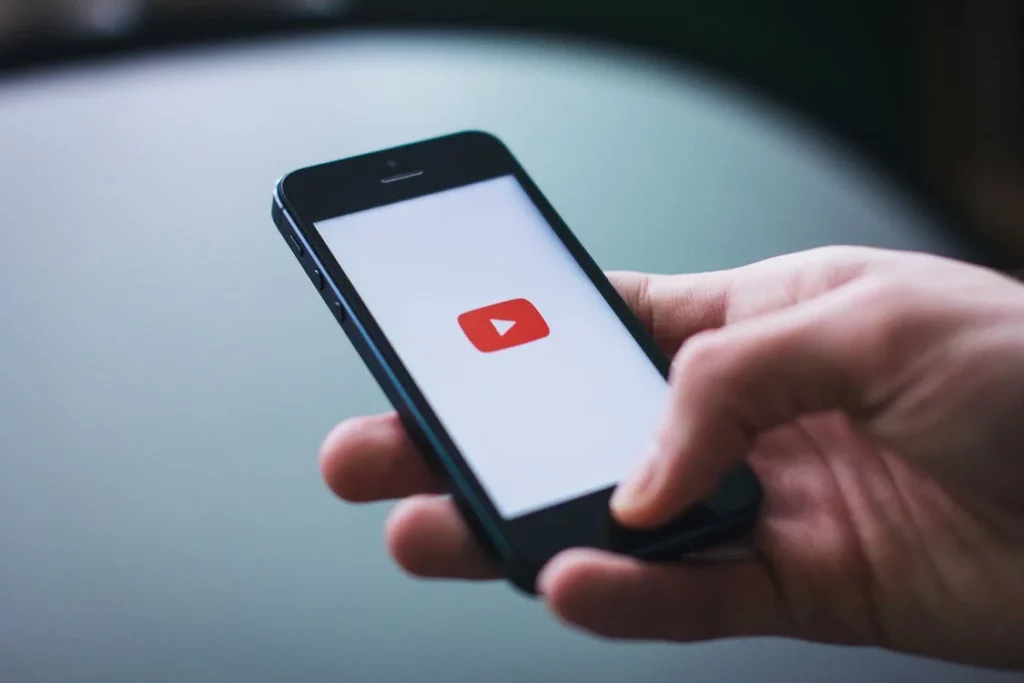
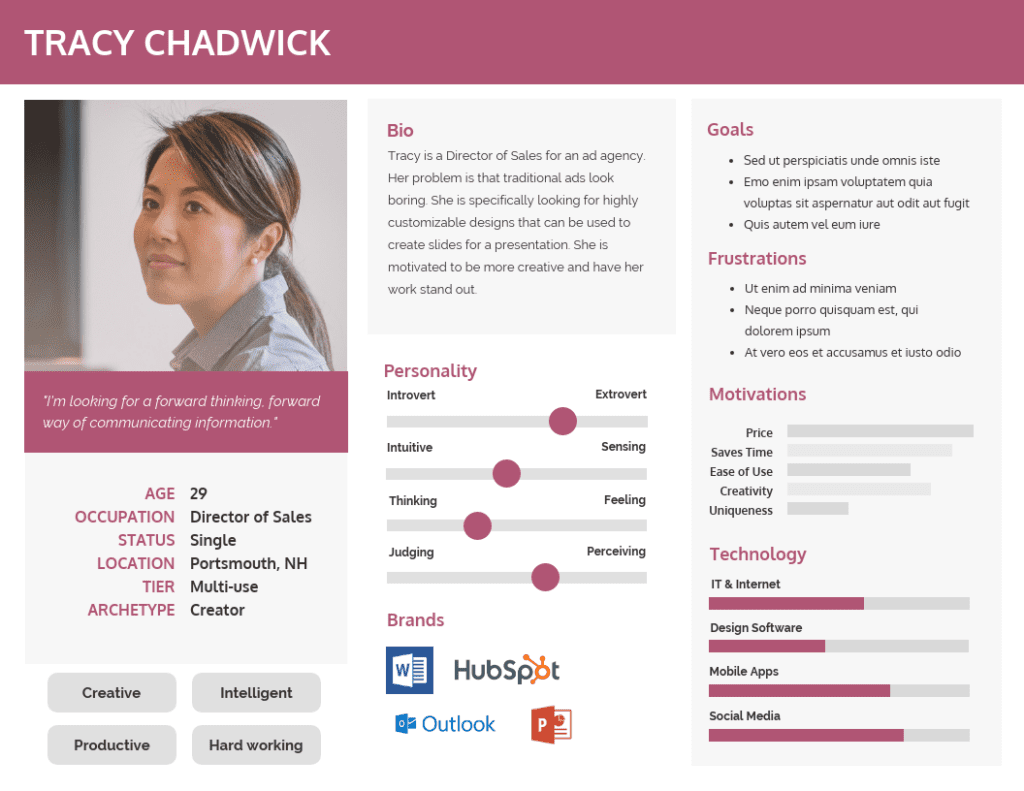
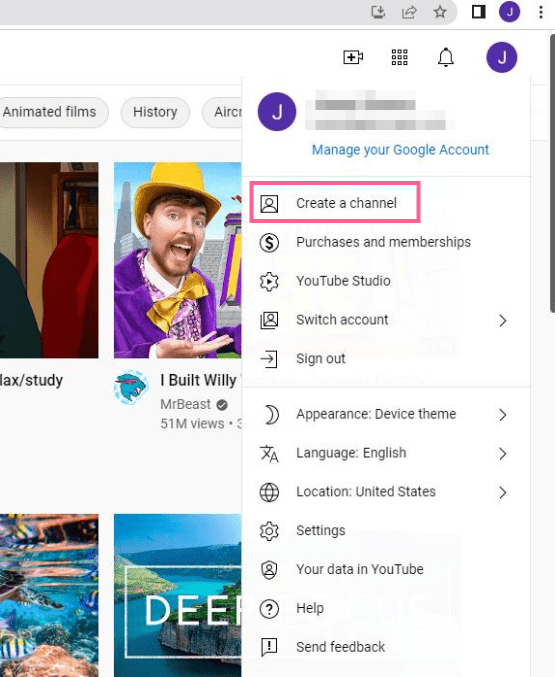
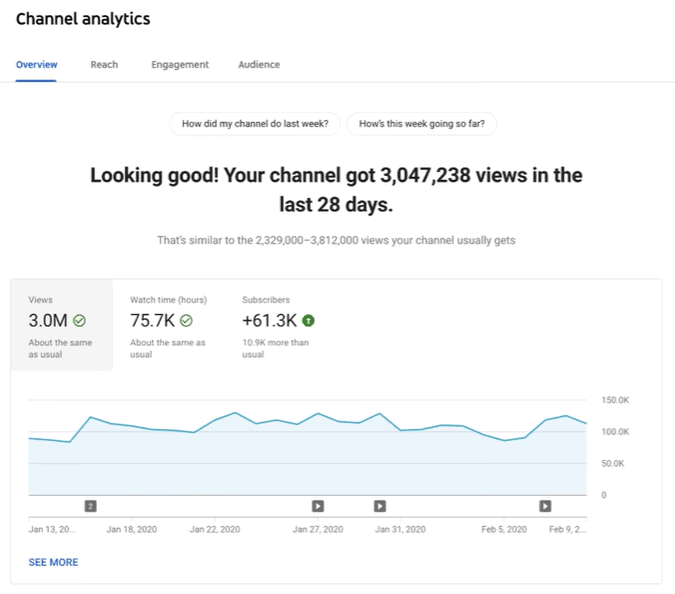
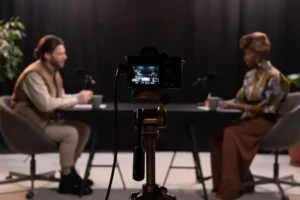

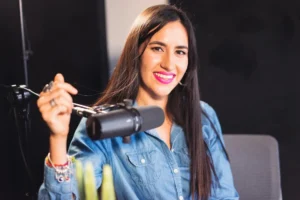
I have a general idea of what I want my focus to be for a YouTube channel. I want a platform where people can express themselves without judgement. I think as adults we need a platform where people can discuss what makes them happy or tick regarding any subject matter.
Thank you. This has been helpful
Thnx about that post) very useful information
Clear and understandable information. and Very helpful
I will enter the world of Youtuber soon.
I’m wanting to start A YouTube video channel contact me please
Good Day.
What will you charge me to create a youtube channel for me that will be published. i dont have followers on youtube or tik tok. would love to start both.